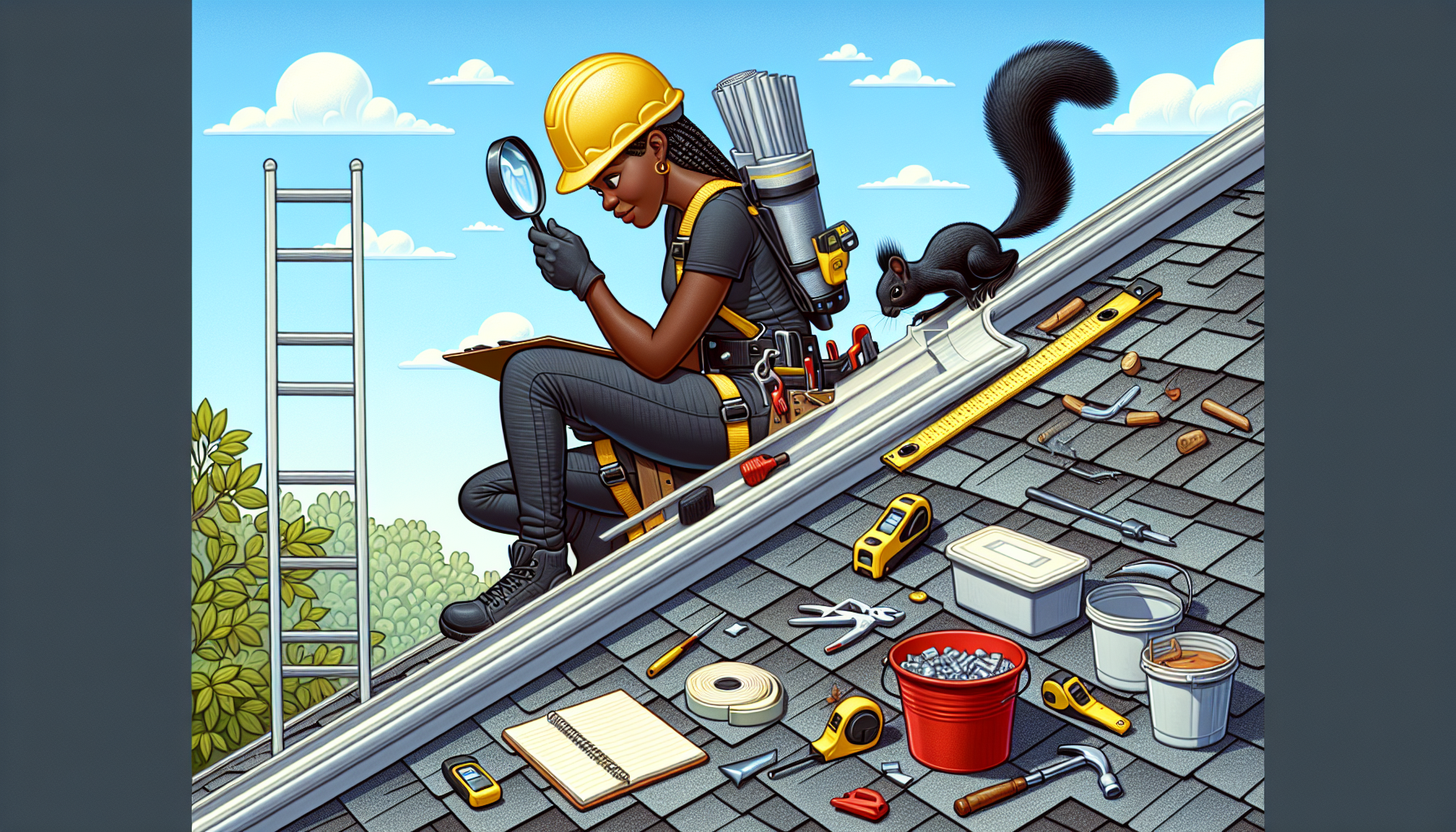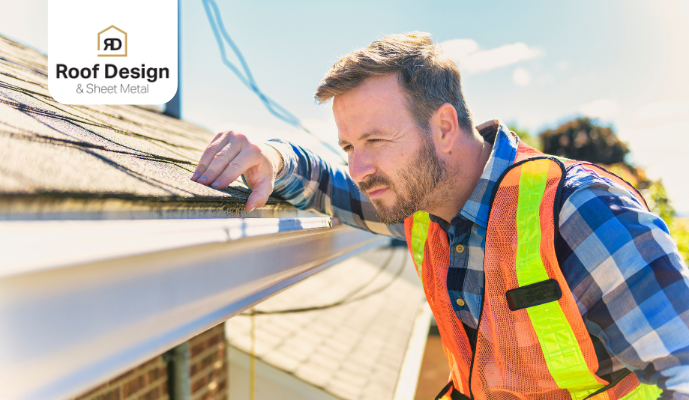You should have your roof inspected every one to two years to catch problems early. This blog will explain how often you should have your roof inspected based on your local climate, roof age, and material.
Key Factors in Determining Roof Inspection Frequency

Roof inspections should be scheduled with varying regularity, contingent upon several crucial elements. Typically, it is advised to have your own roofing contractors inspected once every one to two years. The precise interval for these inspections can hinge on variables such as the local weather patterns, the roofing material’s age, and category, along with the present state of your roof. Conducting routine inspections is essential in reinforcing both the resilience and longevity of your roofing materials.
These elements are critical when establishing an appropriate timetable for your roof inspections. Local climatic factors along with considerations about the maturity and variety of your roofing material serve as fundamental criteria in determining a fitting schedule for examining your roof’s condition.
Local Climate Conditions
The frequency of roof inspections should be guided by the climatic conditions prevalent in your region. Frequent and rigorous inspections are crucial for roofs in localities that experience intense weather events, including substantial rain, snow, and robust gusts of wind. These severe weather occurrences can weaken your roof’s structural soundness. Routine assessments are critical to ensure its integrity.
For instance, buildings located where storms or strong winds frequently occur have a higher risk of sustaining damage. Branches from trees that extend over the house can become hazardous during such weather episodes and ought to be pruned back to avoid harming the roof. Given these circumstances, it is important to adopt an anticipatory stance when it comes to maintaining and inspecting roofs regularly.
Age and Type of Roofing Material
Inspection frequency is heavily influenced by the age and variety of roofing material in use. It’s often necessary to inspect older roofing materials every six months to confirm their condition remains satisfactory. Different kinds of roofing, including flat roofs, metal roofs, and those with asphalt shingles, come with distinct durability and upkeep requirements.
While metal roofs boast longevity, they are not immune to problems such as rust or damage to panels. Consistent inspections are imperative. Conversely, signs of degradation tend to appear sooner on asphalt shingles, which may require more regular evaluations by a professional roofer. Acknowledging the particular characteristics and maintenance demands of your roof’s material is crucial when devising a suitable schedule for inspections.
Benefits of Regular Roof Inspections

Conducting roof inspections on a regular basis offers benefits that go far beyond the aesthetic upkeep of your home’s roofing. Homeowners can prevent incurring large expenses, ranging from hundreds to even thousands of dollars, by identifying and addressing potential problems early—this includes minimizing the cost associated with comprehensive roof maintenance programs and inspections themselves. Catching small issues before they develop into major repairs not only safeguards your investment but also maintains the structural integrity of your residence.
Homeowners who implement routine roof leak inspection schedules are better equipped to swiftly tackle concerns such as leaks or any structural impairment, curbing Damage to their property’s roof. It is advisable for homeowners to arrange these examinations biannually, particularly during spring and autumn when seasonal shifts may bring about new challenges or amplify existing weaknesses within the roofing structure.
Early Detection of Issues
Conducting regular inspections of your roof serves the crucial purpose of uncovering potential issues before they escalate. The goal of yearly roof inspection cost and routines is to both identify existing problems with the roof and anticipate future ones, thereby allowing for their prompt resolution. Without routine checks, a variety of complications such as leaks, fractures in the material, and general wear can emerge.
When evaluating a metal roof during an inspection process, pinpointing any instances or underlying causes of leakage is considered essential for maintaining its overall condition. Inspections focusing on roofs covered with shingles typically revolve around detecting areas that have suffered damage or loss due to wear-and-tear or missing elements. Addressing seemingly minor concerns promptly—such as repairing a small crack in pipe boots—can circumvent extensive damage that might otherwise result in more elaborate and expensive repair work down the line.
Prolonging Roof Lifespan
Routine inspections of your roof play a pivotal role in preserving its longevity. Overlooking small problems, such as a fractured pipe boot, might escalate the cracks into major damage. By conducting periodic reviews and addressing issues promptly, these minor setbacks can be resolved before they worsen.
Adhering to regular checks on the condition of your roof not only postpones the need for a full roof replacement but also circumvents the considerable expenses associated with substantial repairs. Taking this preventative measure guarantees that over time, your roof’s structure remains intact and continues to safeguard your residence efficiently.
What to Expect During a Professional Roof Inspection

Undergoing a roof inspection entails an exhaustive review of your roof’s state, pinpointing any concerns that require action. The examination encompasses scrutiny of the roofing surface, drainage mechanisms, and indoor areas to detect imminent issues such as leaks or signs of damage and deterioration.
Being aware of what occurs in an inspection aids you in getting ready for it while guaranteeing all essential components are assessed. The procedure involves visually inspecting the top layer of the most common roofing contractors, assessing elements like flashing and gutters closely, along with conducting checks within interiors like attic spaces and insulation status.
Visual Inspection of Roof Surface
Conducting a visual examination of your roof surface is an essential step. During this inspection, signs of deterioration are sought after, including fractured or curled shingles and areas where shingles might be missing, signaling underlying concerns that require attention. Noticeable damage may also encompass the loss of granular material from shingles, which can expose base materials to potential leaks.
Engaging in routine inspections for maintenance purposes allows one to evaluate the state of the roof’s surface and tackle any arising matters swiftly. Adopting such preventive measures serves to safeguard the durability of your roofing structure and averts small issues escalating into substantial and costly repairs.
Examination of Flashing and Gutters
During a roof inspection, it’s essential to thoroughly evaluate flashing and gutters, as they play vital roles in your roofing system. The inspector assesses the sealing of flashing near vents and chimneys to confirm there are no leaks. Flashing that is compromised or not sealed adequately can result in severe water damage requiring prompt attention.
The condition and alignment of gutters and downspouts are also scrutinized to guarantee efficient water flow away from the property. Regular maintenance of these elements is crucial for safeguarding the integrity of both the roof and home structure against water damage. Diligent inspections followed by timely cleaning help stave off expensive repairs associated with such issues.
Interior Inspection: Attic and Insulation
Inspectors scrutinize the attic and its insulation during internal inspections, searching for adequate coverage and signs of potential concerns. They assess whether there is ample ventilation while inspecting for any signs of water damage or insufficient insulation levels. Spotting moisture-related problems early in the attic can prevent widespread harm and expensive repairs.
Maintaining your roof’s overall well-being hinges on keeping the attic and insulation in prime condition. By ensuring both are correctly ventilated and insulated, you avert moisture accumulation which could further mold growth and otherwise lead to complications, thereby extending your roofing system’s lifespan.
Choosing the Right Roofing Contractor

Choosing an appropriate roofing professional is crucial to guaranteeing a thorough inspection of your new roof. Homeowners should contact Roof Design Naples known for their reliable service within the community and with pertinent expertise in the field. Before deciding on a contractor, it’s important to diligently review their credentials.
A trustworthy roofing contractor can conduct an exhaustive evaluation of your roof and provide dependable recommendations regarding its upkeep and necessary repairs. During the initial meeting, homeowners have the opportunity to share details about their roof’s condition, which aids inspectors in planning effectively for a meticulous assessment.
Summary
It’s essential to conduct routine inspections of your own roofing professionals to preserve its condition and prolong its life. Early detection and prompt remediation of any potential problems can prevent expensive repairs, ultimately extending the durability of your roofing structure.
Instead of allowing issues to worsen, arrange for consistent checks and collaborate with a trusted roofing contractor who can help maintain your roof in prime shape. This proactive approach will safeguard your residence and reassure you.

